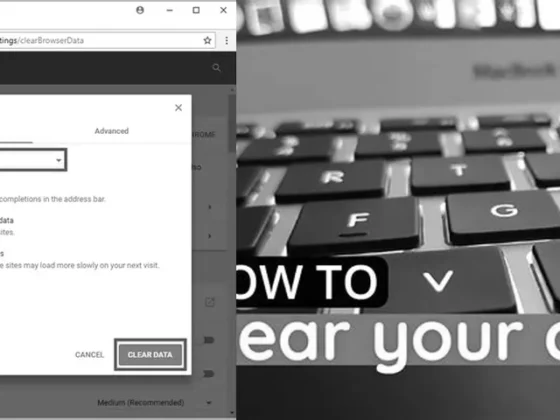How Can I Easily Rename a Folder in Chrome? – Are you tired of having a cluttered mess of folders in your Chrome browser? Well, you’re in luck because we’re here to show you how to rename a folder in Chrome with ease. Whether you’re using a Chromebook or an Android device, we’ve got you covered. Say goodbye to those confusing file names and hello to a more organized browsing experience. So, let’s dive in and discover the secrets of renaming folders in Chrome!
Understanding the Basics of Renaming Folders in Chrome
Renaming folders in Chrome can be an essential task for organizing your digital workspace, whether you’re a student, a professional, or someone who likes to keep their files in order. The process is straightforward, but knowing the exact steps can save you time and frustration. Let’s dive into the details of how you can rename a folder in Chrome.
Simple Steps to Rename a Folder in Chrome
To rename a folder in Chrome, you need to locate the folder first. Once you have found the folder you wish to rename, here are the steps you should follow:
- Right-click on the name of the folder you want to rename.
- Click on “Rename” in the menu that appears.
- Type in the new name for the folder and press Enter.
This process is quite user-friendly and can be done within seconds. It’s important to note that this method is applicable to Chrome on desktop environments, including Windows, macOS, and Linux.
Renaming Files and Folders on a Chromebook
Chromebooks have gained popularity for their simplicity and integration with Google services. Renaming files and folders on a Chromebook is a similar process to that on a traditional desktop, with some small differences due to its Chrome OS environment.
Steps to Change Folder Names on a Chromebook
When working with a Chromebook, the following steps will guide you through renaming a folder:
- Select the Launcher at the corner of the screen.
- Open the “Files” app.
- Choose the file or folder name you want to rename.
- Press Ctrl + Enter.
- Type in the new name for the folder and press Enter.
With these steps, you can keep your files organized and ensure that their names are reflective of their contents. This can be especially useful for students or professionals who need to manage numerous documents and projects efficiently.
Renaming Files on Android Devices
Many Chrome users also operate on Android devices, which require a different approach to renaming files due to the mobile operating system’s user interface and file management system.
How to Change a File Name in Chrome on an Android Device
For Android users, the process to rename files is as follows:
- Open the “Files by Google” app on your Android device.
- Tap on “Browse” at the bottom of the screen.
- Select the category or storage device where the file is located.
- If you’re using Grid view, press and hold the file, then tap on “More” and select “Rename.”
- Enter the new name for the file and tap OK.
This method is particularly useful for those who frequently use their mobile devices for work or personal tasks. It’s another way to ensure that your digital files are well-organized, even when you’re on the go.
Best Practices for Renaming Folders and Files
While the process of renaming a folder or file is straightforward, it’s also crucial to follow some best practices to avoid confusion and maintain order in your file system.
Tips for Effective File and Folder Management
Here are some tips to help you manage your files and folders effectively:
- Use descriptive names: Choose names that clearly indicate the content of the folder or file.
- Be consistent: Follow a consistent naming convention across all your documents.
- Avoid special characters: Stick to letters and numbers to prevent issues with different operating systems and software.
- Keep it short: Long file names can be cumbersome and may not display fully in some interfaces.
By adhering to these guidelines, you can enhance your productivity and avoid potential mishaps related to misnaming or losing track of important documents.
Conclusion
Rename folders and files in Chrome and its related operating systems, such as Chrome OS and Android, is a simple yet vital skill for digital organization. Whether you’re tidying up your Chrome bookmarks, managing school work on a Chromebook, or sorting through photos on your Android device, the ability to rename files and folders will help keep your digital life orderly and efficient. Remember to integrate best practices into your renaming routines to maximize the benefits of your organized digital environment.
For a visual guide on how to rename a folder in Chrome, you can also refer to online video tutorials, such as the one available on YouTube. These resources can provide a step-by-step visual representation of the process, making it even easier to follow along and apply the steps to your own devices.
Organizing your digital files might seem like a small task, but it can have a significant impact on your productivity and ease of access to important documents. So next time you find yourself scrolling through a cluttered file directory, take a moment to rename and reorganize—your future self will thank you!
FAQ & Related Questions about How Do I Rename A Folder In Chrome?
Q: How do I rename a folder in Chrome?
A: To rename a folder in Chrome, right-click on the name of the folder, click on “Rename” in the menu that appears, type in the new name for the folder, and press Enter.
Q: How do you rename an existing folder?
A: To rename an existing folder, right-click on the name of the file or folder you wish to rename, click on “Rename” in the menu that opens up, type a new name for the file, and press Enter.
Q: How do you change the folder name in Chromebook?
A: To change the folder name in Chromebook, select the Launcher at the corner of your screen, open Files, locate the folder you want to rename, right-click on the folder, click on “Rename” in the menu that appears, type in the new name for the folder, and press Enter.
Q: How do I create a new folder and rename it?
A: To create a new folder and rename it, right-click on an empty space in the desired location, click on “New Folder” in the menu that appears, type in a name for the new folder, and press Enter. Then, follow the steps mentioned above to rename the folder if needed.
Q: Why can’t I delete or rename a folder?
A: If you are unable to delete or rename a folder, it is likely because the file or directory is open by you or another user on the network. Windows locks the file or directory when it is open, and it will release the lock when it gets closed. This is commonly seen when trying to rename a folder that contains locked files.


